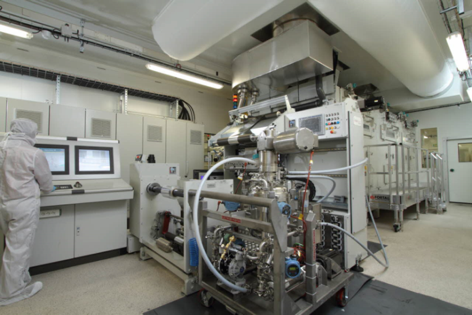Battery Cell Manufacturing
By involving actors along the whole value chain and from each part of the knowledge triangle the newly developed battery materials were processed to innovative electrodes and battery cells. This was achieved in the following two steps:
Pre-Pilot Cells
For the improvement of the electrode formulation and cell composition, various test cells were produced at Fraunhofer ISC and CEA on a lab and pre-pilot scale. Different LiFSI-based electrolytes, binders and carbon additives were applied. The amounts of active material (ORMOCER®- coated NMC 622), nanotubes (Graphistrength®) and pore former (Porocarb®) were optimized, the calendaring was varied and the capacities of anodes (standard graphite based) and cathodes (innovative ECO COM'BAT composites) were adjusted to each other.
Pilot Cells
The findings were discussed with the industrial cell manufacturers and transferred to the subsequent pilot production. Several 100 meters of electrodes were manufactured at CEA and Customcells based on the best formulations. Pilot battery cells with high capacities ranging from 2.7 Ah to 24 Ah could be achieved with the large-scale electrodes and final batches of the selected electrolyte. These full cells had a pouch design (10 cm x 10 cm) or cylindrical format (50125). To meet automotive standard requirements, energy and cost efficient production methods were applied.
 Fraunhofer Institute for Silicate Research ISC
Fraunhofer Institute for Silicate Research ISC

